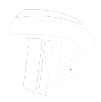聚丙烯树脂是四种通用热塑性树脂之一 (聚乙烯, 聚氯乙烯, 聚丙烯, 聚苯乙烯). 以丙烯为原料,乙烯为共聚单体经聚合而成.
聚丙烯的生产过程主要经历了几个发展阶段, 如溶剂法, 解法, 液相本体法 (包括液相气相组合) 气相法. 在世界上, 用于生产聚丙烯的工艺方法分为以下几类: 溶剂法, 解法, 液相本体法 (包括液相气相组合) 气相法. The process features are as follows:
Solvent polymerization
Solvent method (also known as slurry method or slurry method, slurry method) is the earliest used polypropylene production process. 然而, due to the disadvantages of deashing and solvent recovery process, long process and complexity, with the progress of catalyst research technology, since the 1980s, solvent method has been stagnant and gradually replaced by liquid-phase bulk method.
工艺特点: (1) propylene monomer dissolves in inert liquid-phase solvent (such as hexane), polymerizes in solvent under the action of catalyst, and the polymer is suspended in the solvent in the state of solid particle transportation, using a kettle type agitated reactor; (2) there are deashing and solvent recovery processes, with long process, more complex, large investment and high energy consumption. 然而, the production is easy to control and the product quality is good. (3) polypropylene particles are separated by centrifugal filtration and then dried by air flow boiling and extruded.



